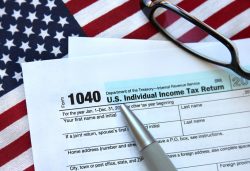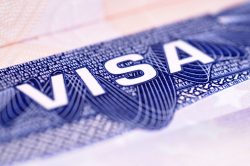An October Surprise for Employment-Based Workers

By: Rishi P. Oza, Esq.
The October Visa Bulletin was welcome good news for an otherwise bleak 2020, as the priority dates moved significantly for EB-1, EB-2 and EB-3 category workers from both India and China. The dramatic jump forward holds the promise of unlocking thousands of foreign workers from their current job positions and giving them flexibility of moving around within the US economy. Greater flexibility usually spurs more innovation and ingenuity, which given the current economic conditions, can only be considered a good thing.

For purposes of background, foreign workers in the United States must go through a two or three step process to obtain permanent residency status, depending upon their expertise and type of job. This process requires capturing a “priority date” and thereafter applying to adjust status to that of a lawful permanent resident. A priority date is captured by either filing a Labor Certification Application with the US Department of Labor or an I-140 Immigrant Petition for Alien Worker with USCIS. The priority date is essentially one’s place in line when waiting for a green card, with some lines stretching to be in excess of 10 years. How long the line is depends upon his/her country of birth, as well as the type of job that he/she possesses. Those with the most sophisticated jobs are considered priority workers (EB-1), which includes individuals of extraordinary ability, outstanding researchers/professors or intra-company executives/managers. Individuals whose jobs require an advanced degree or whose presence in the United States is in the national interest are in the EB-2 category. Finally, professional, skilled or unskilled workers are categorized as EB-3 individuals.

Each specific EB category has different processing times, which are dictated by the Visa Bulletin, a chart issued by the US Department of State that guides applicants as to when they can file for the adjustment of status to their green card status. If an individual’s date is not current according to the Visa Bulletin’s Dates for Filing chart, he/she must wait to file for their Adjustment of Status and continue to remain in nonimmigrant status. This means that all travel can only be done once a visa is secured and that employees are often compelled to remain with the employer that sponsored them. As a result, individuals that may want to move jobs are restricted from doing so out of fear asking a new employer to restart the sponsorship process, which can be time-consuming and costly. Moreover, should that new process fail, the employee is left without any real options and may have to contemplate returning to his/her own country.
The benefit of a changing Visa Bulletin is that it provides employees with flexibility without having to beg a new employer for sponsorship. For example, the September Visa Bulletin only allowed EB-3 workers from India to apply for their Adjustment of Status if they had a priority date of February 1, 2010 or earlier – this means that an Indian citizen must have started his/her green card sponsorship process in February 2010 in order to apply for their green card in September 2020. By all accounts, waiting 10 ½ years to simply apply for a green card is absurd; however, the October Visa Bulletin shows that the dates for filing the green card application are jumping forward from February 1, 2010 to January 1, 2015 for EB-3 workers. Similarly, EB-1 and EB-2 workers from India and China are also seeing a jump in almost two years for their respective categories. While the processing of these cases will likely still take years, the ability to file the I-485 is of significant importance.

Foremost, by filing the I-485 Application to Adjust Status and allowing it to process for 180 days, employees can move or “port” the entirety of their green card process from their sponsoring employer to any new employer provided that the new position is “substantially similar” to the job position for which the employee was originally sponsored; while determining whether any new position meets this substantial similarity test is often done by argument, most employees moving into new roles with new companies tend to stay within their respective fields of expertise. Moreover, filing the I-485 for a principal applicant allows all of that principal’s derivative beneficiaries (spouses and under 21 year old children) to also apply for their green cards, opening up the possibility of securing work authorization for an entire family – spouses can finally get to work; children can try to secure part-time jobs after school to help pay for their first car; families can start maximizing their productivity.
Because the EB-3 category moved forward significantly, EB-3 workers have the advantage of being able to apply for a green card sooner than their EB-2 counterparts. However, EB-2 workers can resubmit an I-140 petition to USCIS requesting that they be recategorized as an EB-3 worker while keeping the same job position and maintaining their priority date. The benefit of doing so includes all of those advantages discussed above, along with having two visa petitions upon which to adjust. Should the EB-2s leap over EB-3s in the future, an applicant can again file for adjustment on that basis. Moreover, as I-140s for EB-2 and EB-3 category filings can be submitted via premium processing, getting all of this done in the month of October is achievable.

Most importantly, the move in priority dates give hope to thousands of immigrants who have been waiting years to finally assimilate into American culture. The idea that an individual with a Masters degree working in highly-skilled professional jobs is required to wait a decade for a green card not only evidences the outdated nature of our immigration system, but lays bare the dysfunction that exists in Congress in failing to address the problem. What benefit does the United States gain by keeping such skilled individuals stuck in jobs they have, in all likelihood, surpassed in terms of expertise? Although voting may be the only means of resolving the larger systemic issues associated with the US immigration system, the change in the October Visa Bulletin means that at the very least, the month is shaping up to be a busy one for law firms and immigrant households alike around the country.
 About the Author
About the Author
Attorney and Partner Rishi P. Oza received his Juris Doctorate from the Case Western Reserve University School of Law and is admitted to practice law in the States of Ohio and North Carolina. He is accepted to practice law before the US District Court for the Northern District of Ohio, as well as four Courts of Appeals nationwide (Third, Fourth, Sixth and Eleventh). Rishi oversees the firm’s business immigration practice, focusing largely on employment-based immigration for companies and individuals. He also handles much of the federal litigation practice, which he pursues along with his experience in family-based immigration and removal defense.






























